When it comes to growing your business, understanding how to lead generation can be the game-changer you need.
Did you know that companies with a solid lead generation strategy see up to 133% more revenue compared to those without one?
This guide will walk you through proven strategies, from identifying your target audience to using lead generation tools like CRM systems. Stick around, and you’ll discover actionable tips to generate leads that convert!
What is Lead Generation?
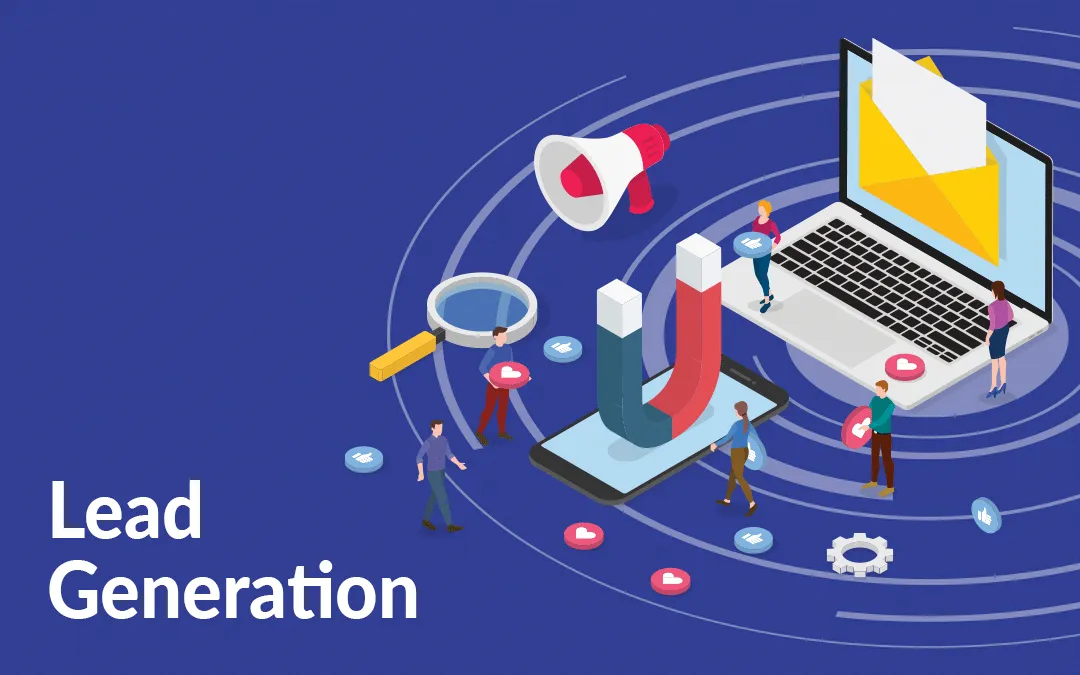
Lead generation is the process of attracting potential customers to your business.
It involves encouraging people to show interest in your product or service and then gathering their contact details, like email or phone numbers.
These people are called leads, and they are the first step toward making the sales process into a sale.
Why is Lead Generation Important for your Business?
Lead generation is critical for the success of any business. Here's why it's so important:
1. Sustains Business Growth
Every business needs new customers to keep growing. Lead generation helps by consistently generating business leads and bringing in new leads who can become paying customers.
- More Leads = More Growth: Without new leads, your business risks stagnation. Lead generation ensures you always have potential customers.
- Example: If you’re running an online store, capturing new leads through targeted ads or social media can lead to a steady stream of new customers, helping your business grow.
2. Increases Sales Opportunities
The more leads you generate, the more chances you have to make a sales qualified lead. Think of every lead as an opportunity to sell your product or service.
- More Leads, More Sales: Generating more leads opens the door for more sales opportunities.
- Example: A company that uses lead generation strategies like social media marketing will increase its chances of converting those leads into paying customers.
- Once you’ve identified sales qualified leads, it’s important to follow up quickly before they lose interest.
3. Reduces Customer Acquisition Costs
Lead generation tactics can lower the cost of acquiring new customers. It’s cheaper to capture a lead who’s already shown interest in your product than to continually advertise to a cold audience.
- Lower Costs with Lead Generation Tools: Lead generation tools help reduce the need for costly advertising by targeting the right people at the right time.
- Example: Using content marketing strategies, like writing blog posts or creating landing pages, can bring in leads organically and reduce the need for expensive paid ads.
4. Builds Brand Awareness
Lead generation also helps get your brand in front of more people. The more people know about your business, the more likely they are to choose you over competitors.
- More Awareness, More Trust: Regularly generating leads helps people recognize and trust your brand.
- Example: By using social media platforms to run lead generation campaigns, a small business can build awareness and loyalty even before a sale is made.
Types of Lead Generation

1. Inbound Lead Generation
Inbound lead generation is about attracting people to your business. You create useful content or tools that make people come to you.
For example, you might write helpful blog posts or create free guides that answer common questions your target audience has. When people find your content online, they may sign up for your newsletter or contact you, becoming a qualified lead.
Here's how it works:
- It attracts qualified leads who are already interested in what you offer.
- It helps build trust with potential customers by offering them valuable information.
- It's a cost-effective way to generate leads over time, especially with tools like content marketing and search engine optimization.
- An inbound marketing strategy attracts leads through valuable content and organic engagement.
2. Outbound Lead Generation
Outbound lead generation is when you reach out to potential customers. Instead of waiting for people to come to you, you actively contact them. This might include cold calling, sending emails, or using paid ads to find leads.
Here's how it works:
- It allows you to target specific people or businesses who may not know about you yet.
- Outbound lead generation is faster because you don’t wait for people to find you.
- Tools like paid ads and cold emails help you reach a wide audience quickly.
3. Online Lead Generation
Online lead generation happens when businesses use the internet to find leads. They can do this by using social media platforms, websites, or emails to reach their target audience. When people show interest by filling out a form or subscribing to a newsletter, they become leads.
Here's how it works:
- Businesses create valuable content like blog posts or videos to attract people. When someone enjoys the content, they might sign up for more, becoming a lead.
- Companies use ads on search engines and social media to capture leads. For example, if you see an ad for a free guide and enter your email to get it, you become a lead.
- Sharing interesting posts, offering discounts, or hosting giveaways can encourage people to engage with your brand and share their information.
4. Event-Based Lead Generation
Event-based lead generation focuses on gathering leads during events, both online and in-person. These events can be webinars, conferences, trade shows, or product launches.
During these events, businesses can collect contact details from people interested in learning more about their product or service.
Here's how it works:
- A company hosts an online seminar to share useful information. Attendees register with their emails, which turns them into leads.
- Businesses set up booths and interact directly with potential customers. They collect business cards or scan badges to capture leads.
- When a new product is introduced, businesses often host events that invite potential customers to sign up for updates or exclusive offers, turning them into leads.
5. Referral Lead Generation
Referral lead generation happens when your current customers tell others about your business. These new leads trust your business because they heard good things from someone they know.
Think about it like this: If a friend tells you about a great new video game, you're more likely to check it out. The same thing happens when customers recommend your business.
Here's how it works:
- Happy customers are your best sales team. After they have a good experience, ask them to share it with others.
- You can offer discounts or rewards to customers who bring in new leads. This motivates them to tell more people about your product or service.
- Leads from referrals are often easier to convert into paying customers because they already trust your business.
Key Steps in Lead Generation Process
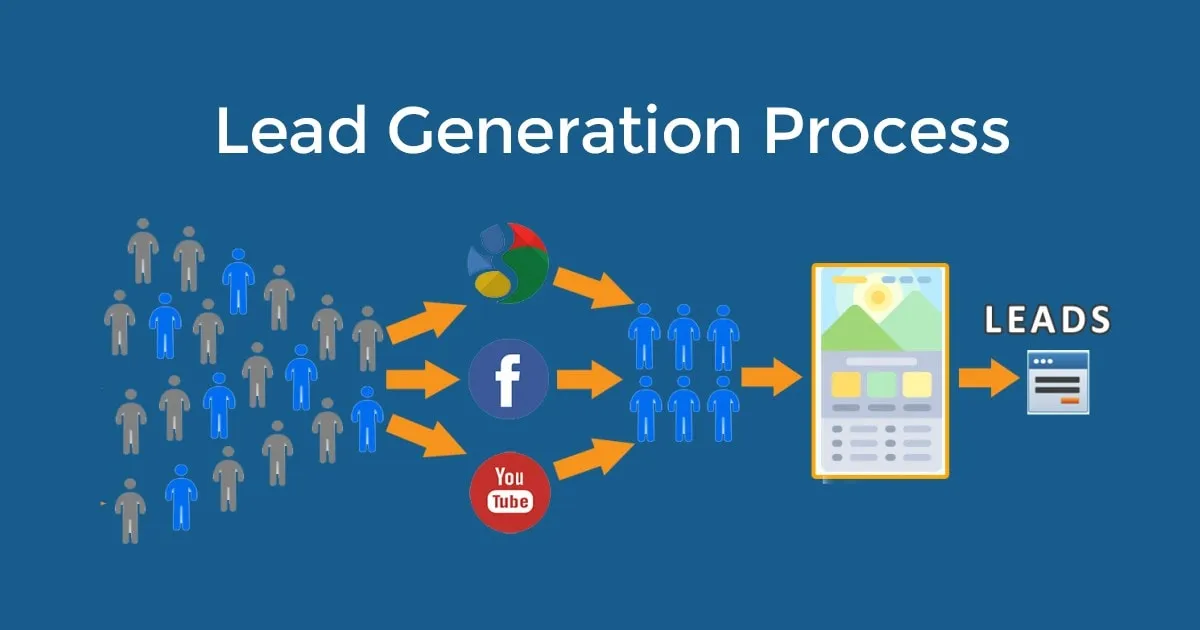
1. Identify Your Target Audience
Before you can generate leads, you need to know who you’re trying to reach. Your target audience is the group of people who are most likely to be interested in your product or service. By focusing on them, you’ll have a better chance of capturing high-quality leads.
Why It’s Important:
Saves Time and Money: Instead of trying to reach everyone, focus on the people who are more likely to buy from you.
Increases Lead Quality: By knowing your audience, you can create messages that speak directly to their needs. This helps attract qualified leads who are ready to engage with your business.
How to Do It:
- Research Your Audience: Find out their interests, needs, and pain points. Look at your existing customers to see what they have in common.
- Create a Buyer Persona: To target the right leads, create detailed buyer personas that describe your ideal customer’s needs and preferences. This is a detailed description of your ideal customer. It includes things like age, job, and what problems they need solved.
- Use Social Media and Analytics: Tools like Google Analytics or social media insights can show you where your audience spends time online.
2. Develop a Lead Magnet
A lead magnet is something valuable that you offer in exchange for a person’s contact information. It helps attract people to your business by giving them something they need, like a free guide, checklist, or discount.
Why It’s Important:
Builds Trust: When you give something valuable, it shows that you care about helping your audience, not just selling to them.
Generates Leads Quickly: People are more willing to share their email or phone number when they get something helpful in return.
Increases Engagement: A good lead magnet can make people more likely to interact with your brand and eventually become paying customers.
How to Do It:
- Create a Free Resource: Think about what your audience needs. It could be a helpful guide, an e-book, or a checklist related to your product or service.
- Make It Easy to Access: Use landing pages or pop-up forms on your website where visitors can enter their information to get the lead magnet.
- Promote It on Social Media: Share your lead magnet on social media platforms to reach more people.
3. Choose the Right Channels
To get the best leads, you need to reach your audience in the right places. Not all channels work for every business, so it's important to pick the ones where your target audience is most active.
Why It’s Important:
Increases Efficiency: By focusing on the right channels, you can spend less time and money while getting better results.
Reaches the Right People: Your audience is more likely to engage if you meet them where they already spend time, like on social media platforms or through search engines.
How to Do It:
- Social Media: If your audience spends time on platforms like Facebook, Instagram, or LinkedIn, create targeted posts and ads to reach them. Using multiple lead generation channels, such as social media and email, can help you reach a wider audience.
- Search Engines: Use search engine optimization (SEO) to rank higher on Google. This helps people find you when they’re searching for what you offer.
- Email Marketing: For more direct engagement, send emails to leads you’ve already captured.
4. Create Engaging Content
Creating content that grabs attention is one of the best ways to generate leads. When you create content that is helpful and interesting, people are more likely to engage with it and share their contact information.
To generate qualified leads, focus on creating targeted content that addresses the specific needs of your audience.
Why It’s Important:
Builds Trust: Good content shows that you’re knowledgeable and care about helping your audience.
Increases Engagement: Engaging content keeps people on your site longer, which increases the chances of them becoming a lead.
How to Do It:
- Write Blogs: Create blog posts that answer common questions your audience might have. This will help attract potential customers.
- Use Videos and Infographics: Visual content is more engaging and easier to digest. A well-made video or infographic can quickly explain your product or service.
- Offer Valuable Resources: Create downloadable guides, checklists, or eBooks that provide useful information. This is a great way to collect emails and build a list of qualified leads.
5. Optimize Your Website
Your website is one of the most important tools for generating leads. A well-optimized website can turn visitors into leads by making it easy for them to engage with your content and give you their contact information.
Why It’s Important:
Improves User Experience: When your website is easy to navigate and loads quickly, people are more likely to stay and explore. This increases the chances of converting visitors into qualified leads.
Increases Search Engine Visibility: By using search engine optimization (SEO), you can help your website rank higher on Google, making it easier for potential customers to find you.
How to Optimize Your Website:
- Use Clear Calls-to-Action (CTAs): Make sure every page on your site has a clear, inviting button or link that tells visitors what to do next, like “Sign Up” or “Get a Free Guide.”
- Speed Up Your Site: A slow website can make visitors leave. Use tools to check your website’s speed and fix any issues.
- Make It Mobile-Friendly: Many people browse the internet on their phones, so make sure your website works well on mobile devices.
6. Nurture Your Leads
Once you’ve captured leads, you need to nurture them. This means building a relationship with them over time, so they eventually become paying customers.
Why It’s Important:
Builds Trust: Nurturing leads helps you stay top of mind and builds trust with your audience. This makes them more likely to choose you when they are ready to buy.
Increases Conversion Rates: Nurtured leads are more likely to become customers than leads that are not followed up on.
How to Nurture Your Leads:
- Send Helpful Emails: Keep in touch with your leads by sending them useful information, such as blog posts, tips, or updates about your product or service.
- Use Lead Scoring: Rank your leads based on their actions, like opening emails or visiting your website, so you know which leads are closest to making a purchase.
- Offer Special Deals: Sometimes a discount or special offer can encourage leads to become paying customers.
7. Track and Analyze
Tracking your sales lead generation process means keeping a close eye on how well your strategies are working. This step helps you understand which methods are generating high-quality leads and which ones need improvement.
Why It’s Important:
Improves Performance: By tracking what works, you can focus more on strategies that bring in more qualified leads.
Saves Time and Money: When you stop spending time on things that don’t work, you can use your resources better.
Helps You Adjust: Tracking lets you see when things aren’t going as planned. This way, you can quickly change your tactics to get better results.
How to Implement:
- Use Analytics Tools: Tools like Google Analytics or lead tracking software can show you where your leads are coming from. They help you measure the performance of your lead generation campaigns.
- Set Key Metrics: Decide what to track, such as the number of leads generated, lead quality, or conversion rates. These metrics show how well your lead generation process is working.
- Regularly Review Data: Check your analytics often to see how your campaigns are doing. If something isn’t working, make changes to improve your lead generation efforts. Regularly review your campaign performance data to optimize and improve your lead generation strategy.
Track your marketing efforts to see which strategies bring in the most qualified leads.
Strategies to Generate Leads of High Quality
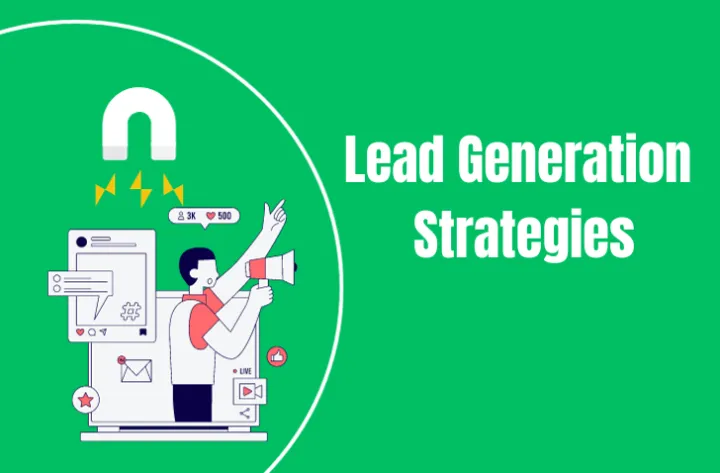
1. Optimize Your Sales Funnel
A well-structured sales funnel is essential for guiding potential customers through their journey, from awareness to decision. Start by evaluating your existing funnel and identifying areas where prospects drop off.
Here’s how to make your funnel more effective:
- Create clear landing pages: Ensure your landing pages are simple, informative, and optimized to capture leads. Include a clear call-to-action (CTA) that encourages visitors to provide their contact information.
- Use lead capture forms: Use lead capture tools that collect key information such as email addresses and phone numbers. This step ensures you have a way to follow up with potential leads.
- Segment your audience: Tailor your messaging based on the target audience. Create personalized experiences by addressing their specific needs and pain points, increasing the likelihood of generating qualified leads.
Optimizing your lead generation funnel ensures that each stage captures the most leads possible.
2. Set Clear Criteria for Lead Scoring
Not all leads are equal, and that’s why lead scoring is important. Lead scoring helps you prioritize qualified leads based on their level of engagement and fit with your product or service.
Here’s how to do it:
- Assign scores based on behavior: Leads that interact with your website, such as downloading a whitepaper or signing up for a demo, should receive higher scores. This helps identify those most likely to convert.
- Consider demographic factors: Assign points based on how closely a lead matches your ideal customer profile. For example, leads from specific industries or company sizes may be more valuable.
- Use automation tools: Consider using lead generation tools that automate the scoring process. This saves time and ensures consistency when evaluating your leads.
3. Run Targeted Ad Campaigns
Targeted ad campaigns are a great way to reach the right audience. Instead of wasting money on ads that reach everyone, focus on the people who are most likely to be interested in what you offer.
Here’s how you can do it:
- Use data to define your audience: By analyzing past customer behavior, you can find out who is most likely to buy your product. Focus on their age, location, and interests to create a targeted ad.
- Pick the right platforms: Whether it’s Google, Facebook, or other social media platforms, choose the platform where your target audience spends the most time.
- Test and adjust: Run small ad tests to see what works. If certain ads bring more clicks and leads, increase your budget for those ads.
4. Host Webinars or Live Events
Hosting webinars or live events is a powerful way to engage with your potential customers. It gives you a chance to showcase your expertise while interacting directly with your audience.
Here’s how to make the most out of webinars:
- Pick a relevant topic: Choose a topic that addresses the pain points of your target audience. For example, if you sell software, host a webinar that teaches people how to solve common problems using your product.
- Promote your event: Use email, social media, and your website to promote the event. Include a strong call to action to capture leads through event sign-ups.
- Offer value during the event: Share insights, tips, and data that can help attendees. The more value you provide, the more likely they are to trust you and eventually become customers.
5. Offer Free Trials or Demos
One great way to attract qualified leads is to offer free trials or demos. This gives potential customers a chance to try your product or service before they make a purchase.
Here's how you can make this work:
- Provide a simple sign-up process: Use easy-to-fill forms on your website to capture leads when they sign up for the trial.
- Highlight the benefits: Make sure to explain what customers can experience during the trial. Tell them how the trial will help solve their pain points.
- Follow up: After the trial, send an email asking for feedback. This is also a good time to offer a discount or encourage them to make a purchase.
6. Leverage Social Proof
People trust what others say about your product. That’s why using social proof is a strong way to generate leads.
Here’s how to use it effectively:
- Share customer reviews: Positive reviews from satisfied customers show potential leads that your product works.
- Use case studies: Highlight stories of how other businesses or individuals have benefited from your product. Real-world results make a big impact.
- Display numbers: Share how many customers have used your product or how many leads you've generated for others. For example, "Over 1,000 businesses trust our software."
7. Use Lead Generation Forms
To capture high-quality leads, it’s important to have well-placed lead generation forms on your website.
Here’s how you can make them work:
- Place forms on key pages: Add forms to landing pages, product pages, and blog posts to capture leads wherever they are on your site.
- Ask for the right information: Keep the form short. Ask only for essential details like name, email, and company.
- Offer something in return: Give leads a reason to fill out the form. This could be access to an ebook, a free consultation, or a newsletter.
Best Lead Generation Tools
Choosing the best lead generation tool for your business ensures that your sales funnel stays full of quality leads.
1. CRM Systems
Alore
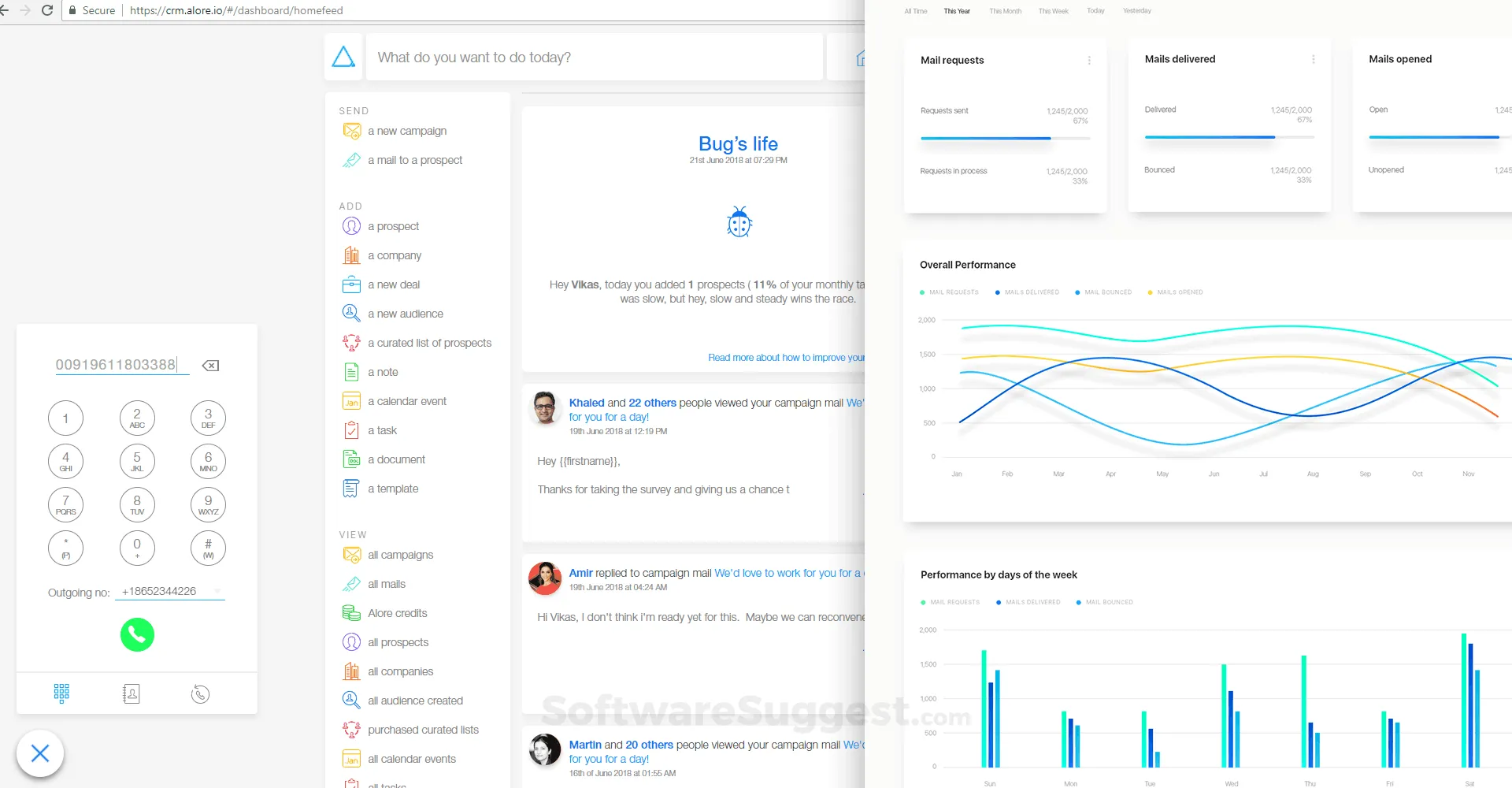
Alore is a CRM system designed to simplify lead management and increase sales efficiency. It is particularly useful for small and medium-sized businesses looking for an affordable, all-in-one lead generation tool, to manage their leads and automate outreach.
Key Features:
- Automated lead capture: Alore collects information from your website and emails to automatically create lead profiles.
- Email sequences: Set up personalized emails to go out to your leads on a schedule. This saves time and helps nurture leads without manual effort.
- Analytics dashboard: Alore offers a clean, easy-to-understand dashboard that shows how your lead generation campaigns are performing.
G2 Rating: 4.5/5
Pricing: Starts at $49/month, making it an affordable option for smaller teams.
Pros:
- Simple, easy-to-use interface
- Great for automating lead capture and email follow-ups
- Affordable for small businesses
Cons:
- Limited integrations with other tools
- Customer support can sometimes be slow
Alore is perfect if you want a straightforward tool to manage your next lead generation campaign without breaking the bank.
Salesforce

Salesforce is one of the most powerful CRM systems available. It’s used by companies of all sizes, from small businesses to large enterprises. Salesforce is known for its flexibility and scalability, making it ideal if you want a system that grows with your business.
Key Features:
- Customizable lead management: Salesforce lets you customize the lead management process to fit your exact needs.
- AI-powered insights: Salesforce uses AI (Artificial Intelligence) to provide insights into the best leads to pursue, helping your sales team focus on high-quality leads.
- Integration with other tools: Salesforce integrates with over 3,000 apps, allowing you to connect your CRM with other tools like marketing platforms and social media.
G2 Rating: 4.4/5
Pricing: Starts at $25/month, but higher tiers can get expensive as you add more features.
Pros:
- Highly customizable to fit any business needs
- Excellent reporting and analytics features
- Strong integration options with other software
Cons:
- Can be expensive for small businesses
- Steeper learning curve due to its advanced features
Salesforce is a great choice if you need a CRM that can handle complex sales processes and grow with your company. Many successful sales teams rely on CRM tools to track and nurture their leads.
2. Email Marketing Platforms
Mailchimp

Mailchimp is one of the most widely used email marketing tools for businesses of all sizes. It is known for being beginner-friendly and offering a variety of templates and automation features.
Here’s what makes Mailchimp stand out:
Key Features:
- Email templates: Mailchimp offers pre-designed email templates that make it easy to create professional-looking emails.
- Audience segmentation: You can group your leads based on behavior, such as what they clicked or purchased. This helps in sending more personalized emails.
- Automated email sequences: Mailchimp allows you to set up automatic emails that go out when someone joins your list or performs a specific action, saving time and effort.
G2 Rating: 4.3/5
Pricing: Mailchimp offers a free plan with limited features, and paid plans start at $13/month.
Pros:
- Easy to use, even for beginners
- Free plan available for small businesses
- Great for basic automation and email campaigns
Cons:
- Limited customization options in the free plan
- Can get expensive as your email list grows
Mailchimp is perfect if you’re just getting started with email marketing and need a simple yet effective way to connect with your leads.
ActiveCampaign
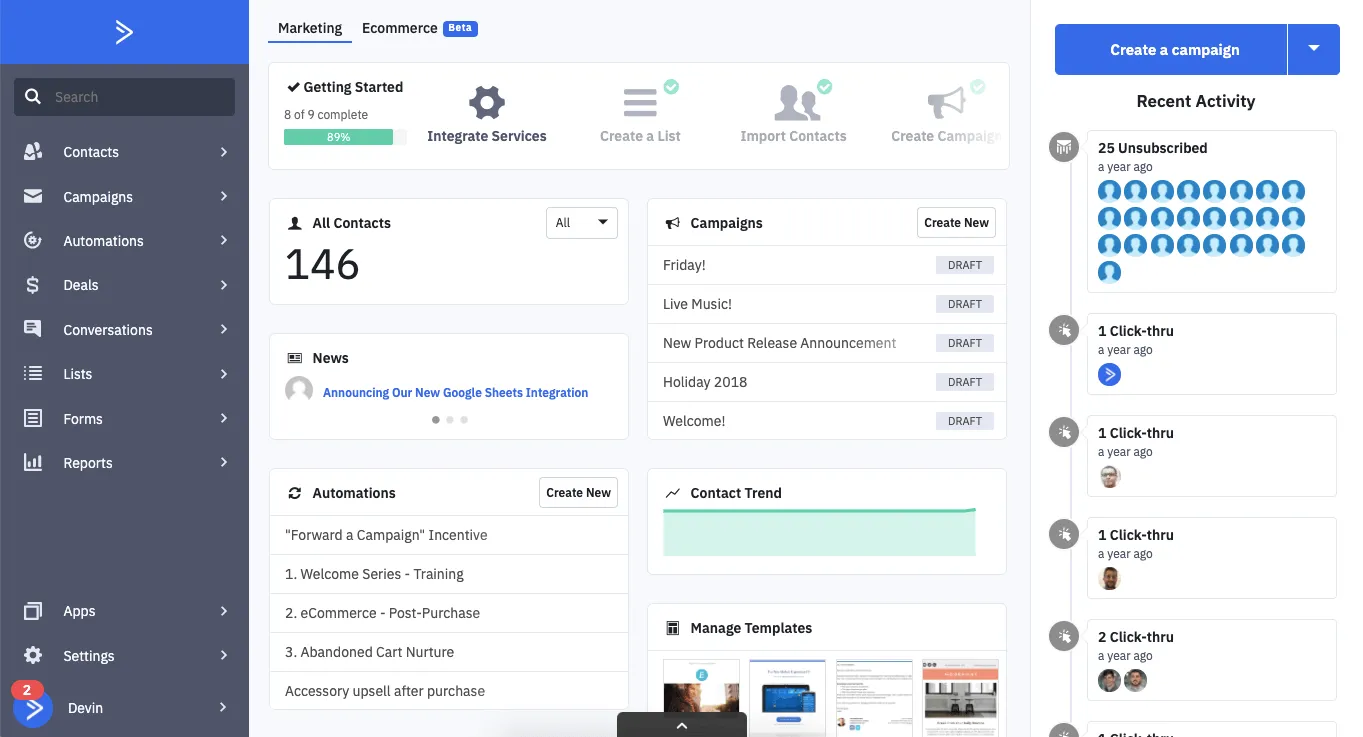
ActiveCampaign is another powerful tool that offers more advanced features, especially for businesses looking to scale. It combines email marketing with sales automation, making it a great choice for businesses that want to build deeper relationships with their leads.
Key Features:
- Advanced automation: ActiveCampaign offers highly customizable automation that allows you to set up complex workflows based on lead behavior.
- CRM integration: ActiveCampaign has a built-in CRM system, so you can manage your email marketing and lead generation efforts in one place.
- Lead scoring: This feature helps you prioritize qualified leads by assigning points based on their actions, such as opening emails or clicking on links.
G2 Rating: 4.6/5
Pricing: Starts at $29/month, with a 14-day free trial available.
Pros:
- Advanced automation features
- Built-in CRM for managing leads
- Excellent customer support
Cons:
- Steeper learning curve for beginners
- More expensive than other platforms
ActiveCampaign is ideal for businesses that want more control over their email marketing and lead generation strategies, especially if they’re looking for deeper engagement with their leads.
3. Landing Page Builders
Unbounce
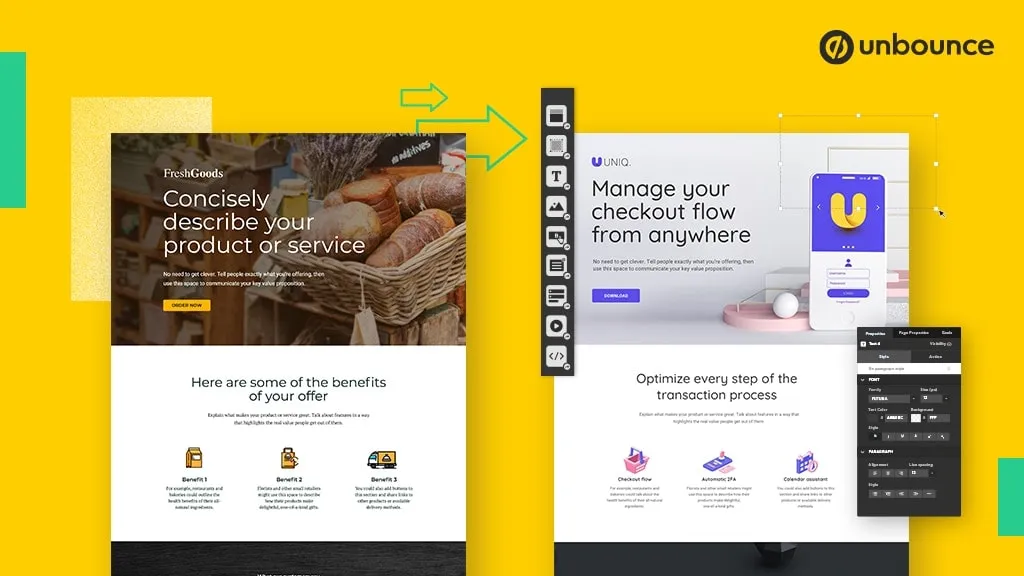
Unbounce is a popular tool that allows you to create beautiful, high-converting landing pages without needing to know how to code. It’s great for businesses that want full control over their landing page designs.
Key Features:
- Drag-and-drop builder: You can easily create landing pages by dragging elements like text boxes, buttons, and images onto the page.
- A/B testing: This feature allows you to create two different versions of a landing page and see which one performs better.
- Conversion intelligence: Unbounce’s AI-powered tool, Smart Traffic, automatically sends visitors to the landing page most likely to convert them into leads.
G2 Rating: 4.5/5
Pricing: Starts at $90/month with a 14-day free trial available.
Pros:
- Easy-to-use drag-and-drop editor
- Excellent A/B testing features to improve lead conversion
- AI-powered tools to enhance performance
Cons:
- Higher price point for small businesses
- Learning curve for beginners who want to use advanced features
Unbounce is ideal for businesses that want to create high-quality leads by optimizing their landing pages.
Leadpages
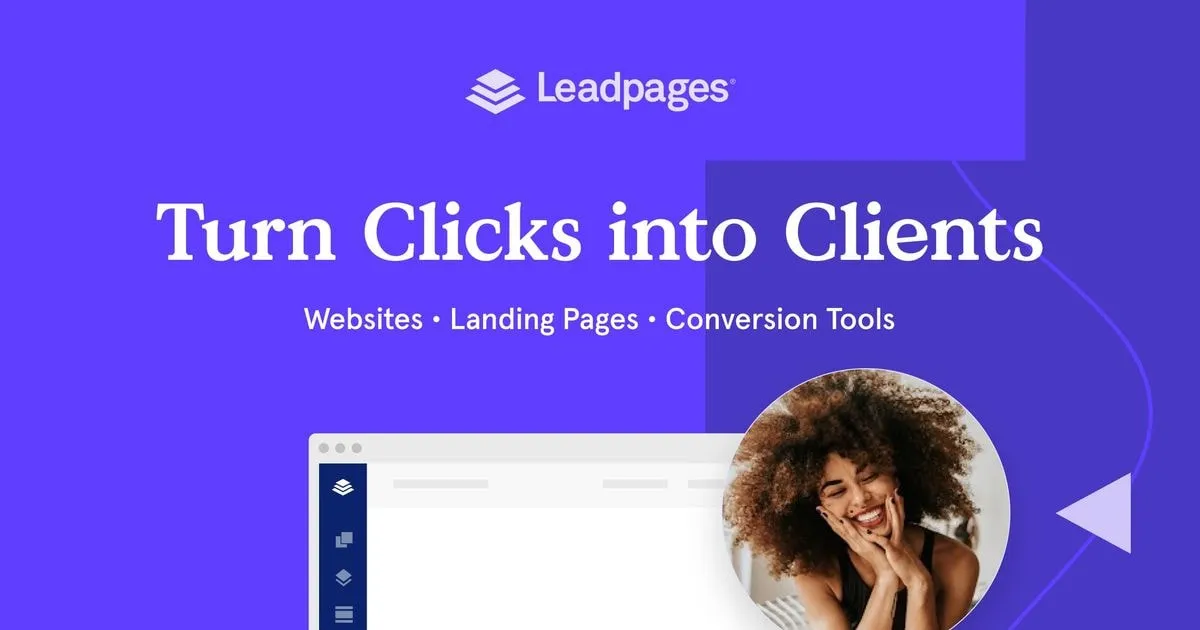
Leadpages is another great tool for building landing pages. It’s known for being user-friendly and affordable, making it perfect for small businesses or beginners.
Key Features:
- Pre-designed templates: Leadpages comes with a variety of templates, so you don’t have to start from scratch. You can customize these templates to fit your brand.
- Pop-ups and alert bars: Besides landing pages, you can create pop-ups and alert bars to capture leads on any page of your website.
- Built-in analytics: Leadpages includes analytics so you can track how well your landing pages are performing.
G2 Rating: 4.3/5
Pricing: Starts at $49/month with a 14-day free trial.
Pros:
- Budget-friendly pricing
- Great for beginners
- Pre-built templates make designing landing pages easy
Cons:
- Limited customization options compared to Unbounce
- Fewer advanced features for experienced users
Leadpages is a great choice if you’re new to creating landing pages and need a simple, affordable solution to start generating leads quickly.
4. Social Media Monitoring Tools
Hootsuite

Hootsuite is one of the most popular social media tools. It allows you to manage and monitor multiple social media accounts from one place. It’s great for both beginners and experienced marketers who want to keep an eye on social conversations.
Key Features:
- Multi-account management: You can manage accounts from different platforms like Facebook, Instagram, Twitter, and LinkedIn, all from one dashboard.
- Social listening: Hootsuite tracks mentions of your brand or industry keywords, helping you spot opportunities to engage with potential leads.
- Analytics: Detailed analytics help you measure the success of your posts and campaigns, allowing you to improve your lead generation efforts.
G2 Rating: 4.1/5
Pricing: Starts at $49/month with a free plan available for one user.
Pros:
- Easy to use for managing multiple social media accounts
- Useful for tracking mentions and conversations
- Free plan available for beginners
Cons:
- The analytics on the free plan are limited
- Can get pricey as you add more features
Hootsuite is an excellent choice if you want a simple tool to track social media conversations and connect with leads quickly.
Sprout Social
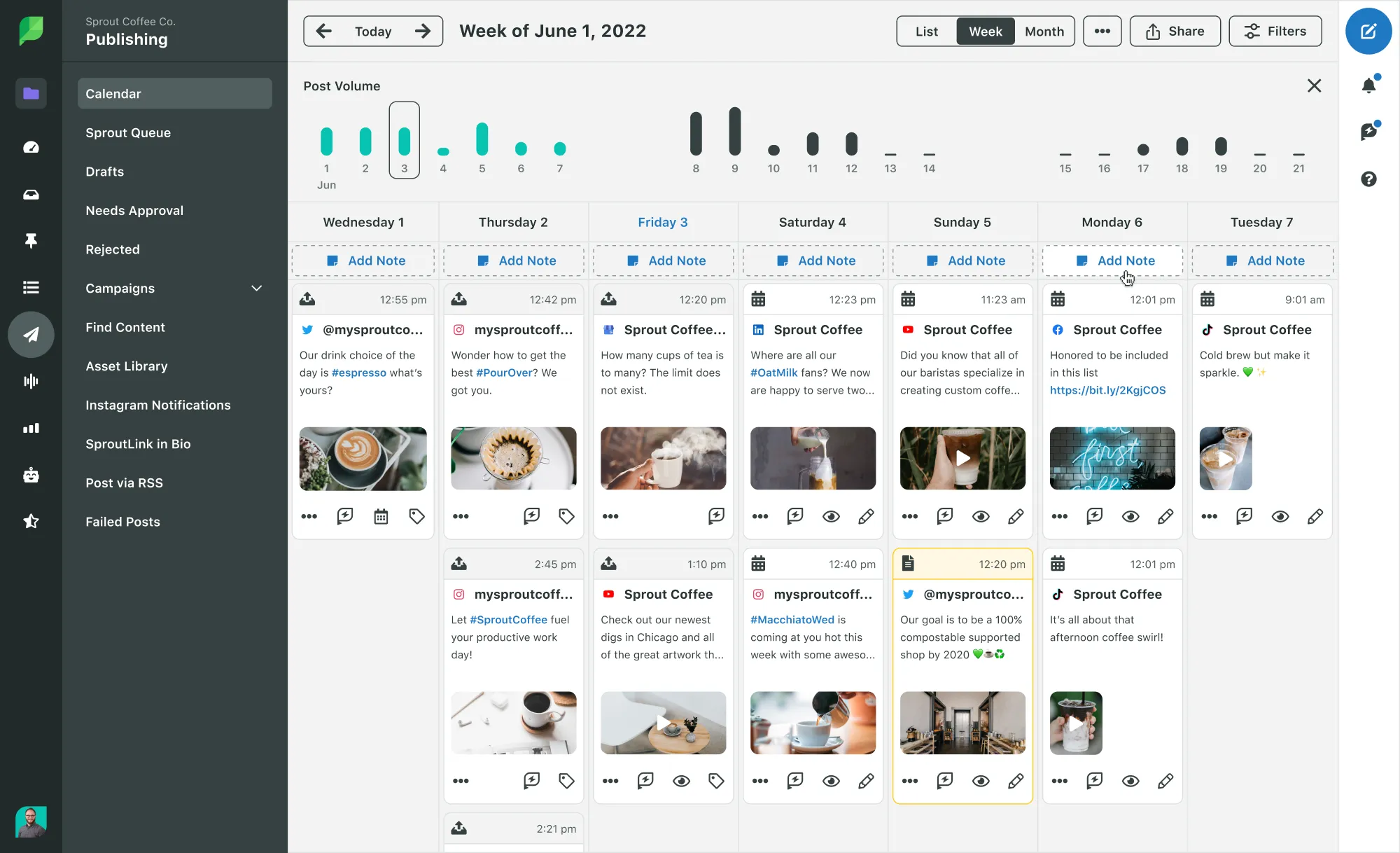
Sprout Social is another powerful tool for social media monitoring. It offers more advanced features, especially for businesses that want detailed insights into their audience’s behavior.
Key Features:
- Social CRM: Sprout Social has a built-in CRM that allows you to track and manage your interactions with leads directly from the platform.
- Advanced analytics: You get detailed reports that show how well your social media campaigns are performing and how to improve them.
- Content scheduling: Plan and schedule posts in advance, ensuring your content reaches the right audience at the right time.
G2 Rating: 4.4/5
Pricing: Starts at $89/month with a 30-day free trial available.
Pros:
- Strong CRM integration for managing leads
- Excellent analytics for tracking performance
- Offers a 30-day free trial to test the features
Cons:
- Higher price compared to other tools
- May take time to learn all the features
Sprout Social is ideal for businesses that want deeper insights into their social media platforms and a more detailed approach to engaging with their potential customers.
7 Essential Tips for Lead Generation Campaigns

1. Segment Audience for Personalization
Segmenting your audience means dividing them into smaller groups based on their interests, behaviors, or demographics. This allows you to send more personalized messages that connect with what they need.
Here’s how you can do it:
Use data to group leads: Look at your leads’ past actions, like what they clicked on or purchased. Group them into categories, such as age, location, or interests.
Create tailored content: Write different messages for each group. This way, your audience feels like you’re speaking directly to them, making them more likely to engage.
2. A/B Testing for Campaign Optimization
A/B testing means creating two versions of a campaign and testing which one performs better. It helps you find out what works and what doesn’t.
Here’s how you can do it:
Test different elements: You can test things like subject lines, call-to-action buttons, or images. For example, send one version of an email to one group and a different version to another.
Use data to improve: Track the performance of both versions. Whichever gets more clicks or conversions is the winner. Use that version to improve your future campaigns.
3. Use Exit-Intent Popups Wisely
Exit-intent popups are small windows that appear when someone is about to leave your website. They’re designed to capture attention and encourage users to take action before they leave.
Here’s how you can do it:
Offer value: Use these popups to offer something valuable, like a discount or a free guide, in exchange for the visitor’s email address.
Keep it simple: Make the message clear and the sign-up form easy to fill out. Too many steps can cause visitors to leave without taking action.
4. Offer Micro-Conversions
Micro-conversions are small steps visitors take before they become full leads. Instead of asking them to buy right away, you can guide them through smaller actions like signing up for a newsletter or downloading a free guide.
Here’s how you can do it:
Use free resources: Offer something valuable like an ebook or a how-to guide in exchange for their email.
Create low-risk actions: Ask for just their name and email to lower the barrier for entry.
5. Leverage AI-Powered Chatbots
Using AI-powered chatbots on your website can help engage visitors in real time. Chatbots can answer common questions, suggest products, or even collect contact information.
Here's how to use them:
Automate conversations: Set up chatbots to respond immediately to visitor inquiries.
Capture leads: Use chatbots to collect basic information like name and email during conversations.
6. Offer Tiered Incentives
Tiered incentives encourage visitors to take action by offering them something in return. The more they engage, the better the reward.
Here’s how you can do it:
Provide different levels of offers: For example, offer a 5% discount for signing up and a 10% discount for making a purchase.
Reward engagement: Encourage repeat actions by giving better rewards to more active users.
7. Collaborate with Influencers
Collaborating with influencers in your industry is a great way to reach new audiences and generate leads. Influencers have loyal followers who trust their recommendations.
Here’s how you can do it:
Find the right influencers: Work with influencers who align with your brand and have followers that match your target audience.
Create engaging content: Ask influencers to share your product or service in a way that encourages their followers to sign up or visit your site.
Conclusion
Learning how to lead generation effectively is key to growing your business. By using the right strategies and tools, you can reach your target audience and convert them into qualified leads.
Keep testing, optimizing, and adjusting your approach to stay ahead. Remember, every small improvement can lead to more leads and greater success. Start implementing these tips today and watch your business grow!

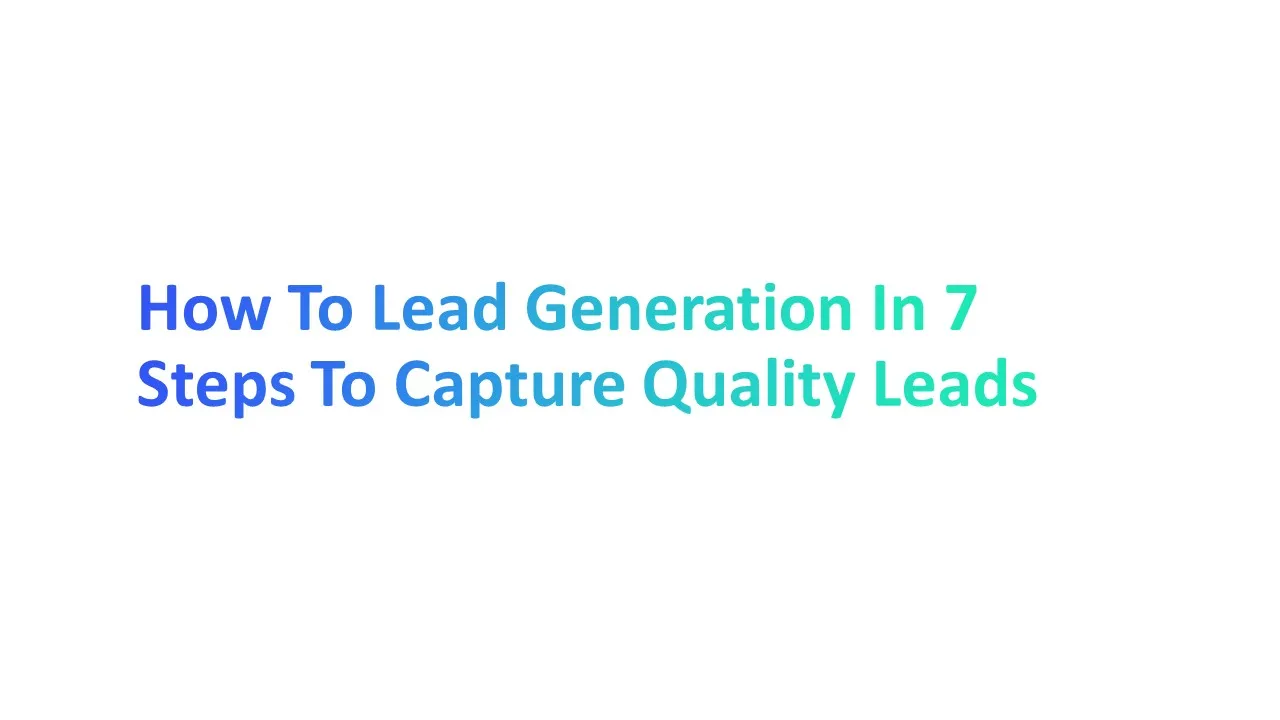



.webp)


